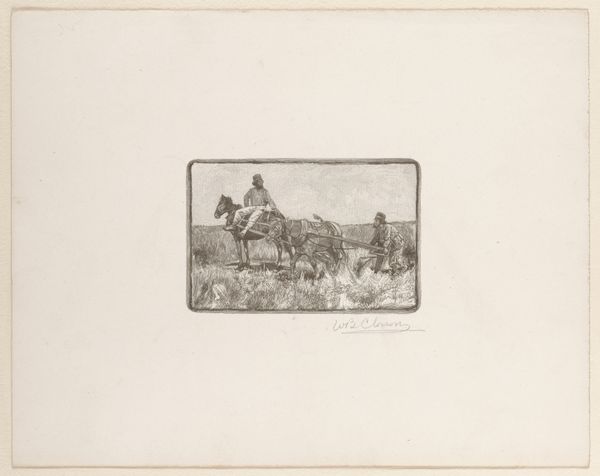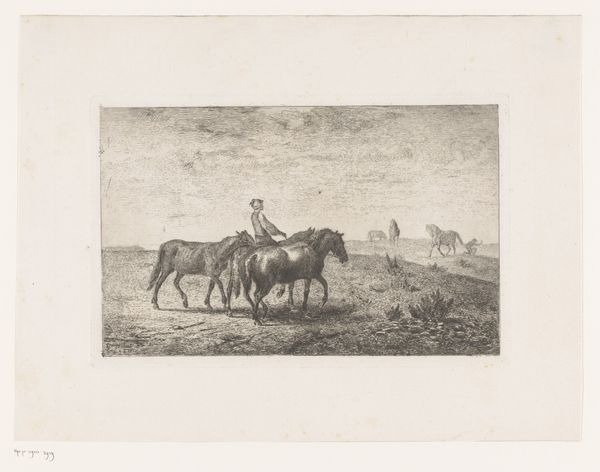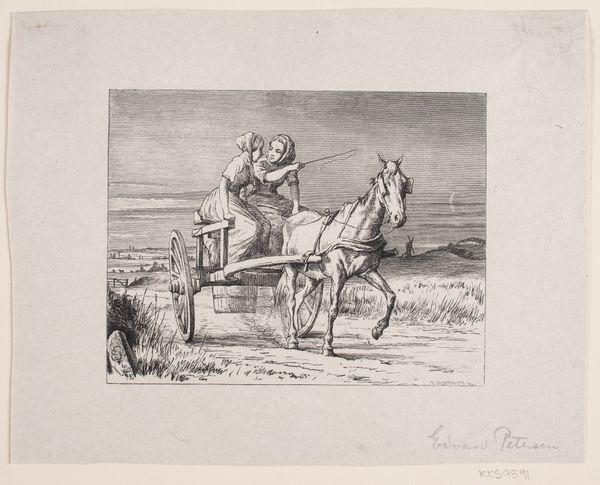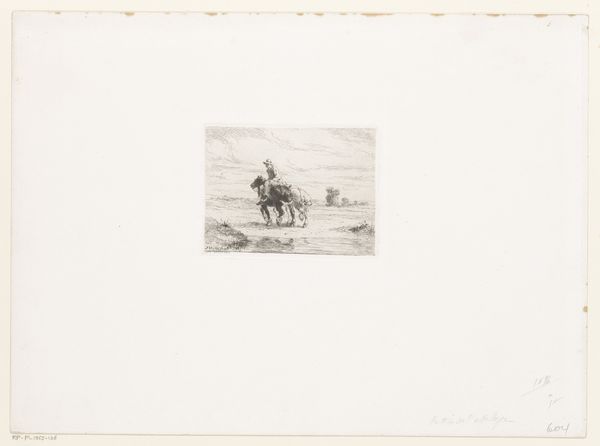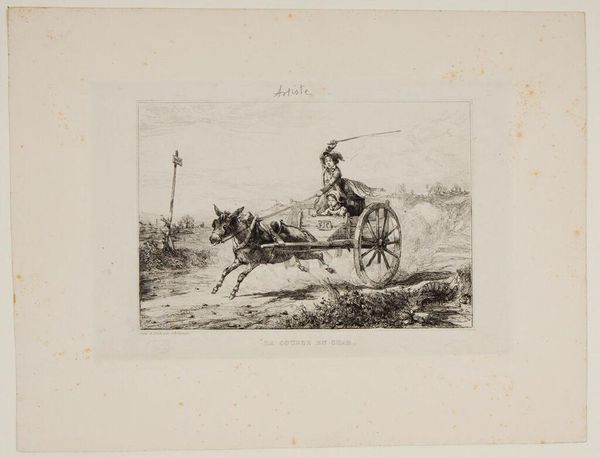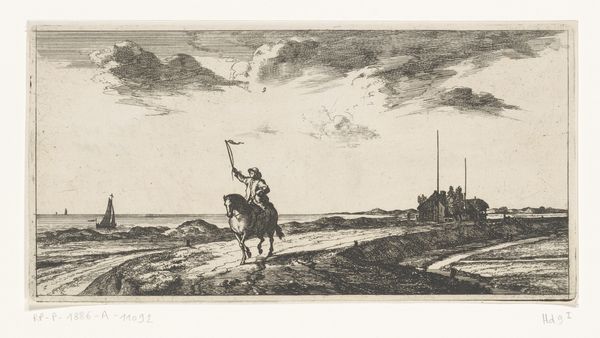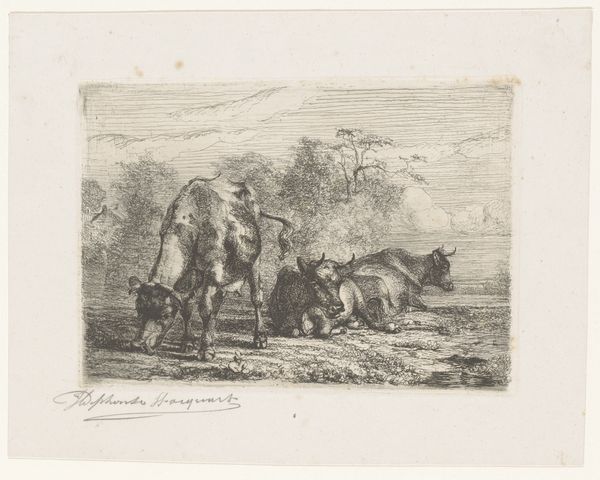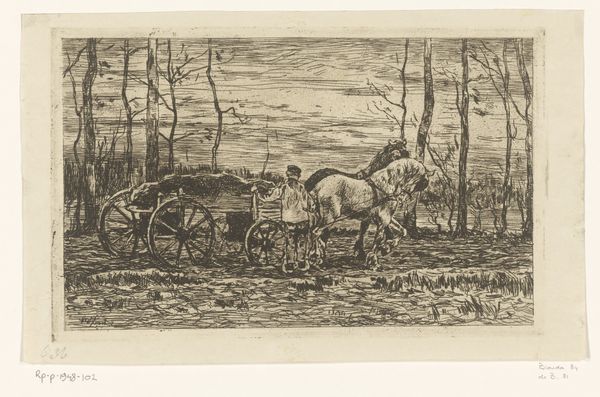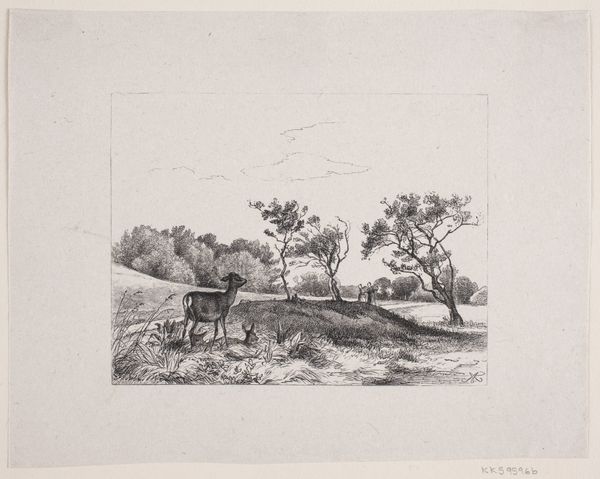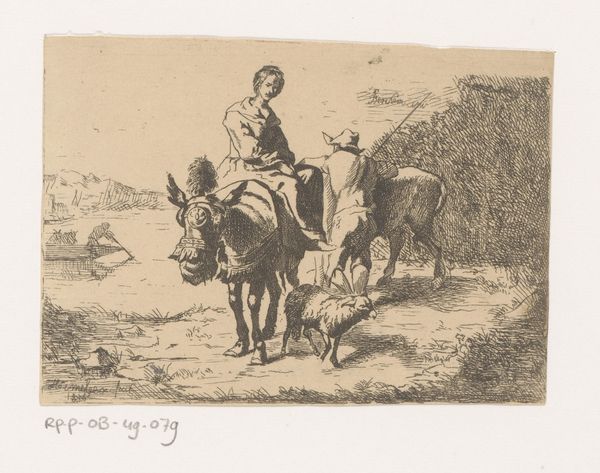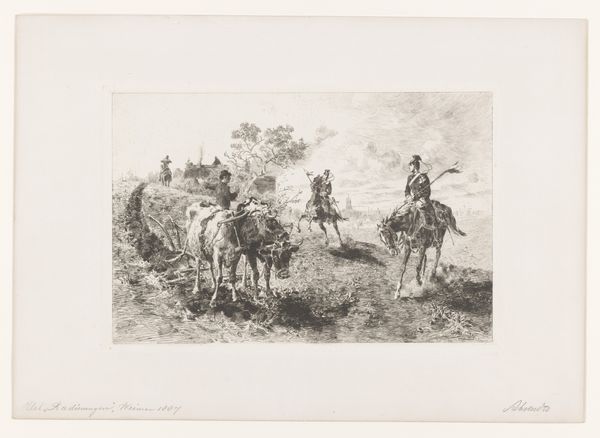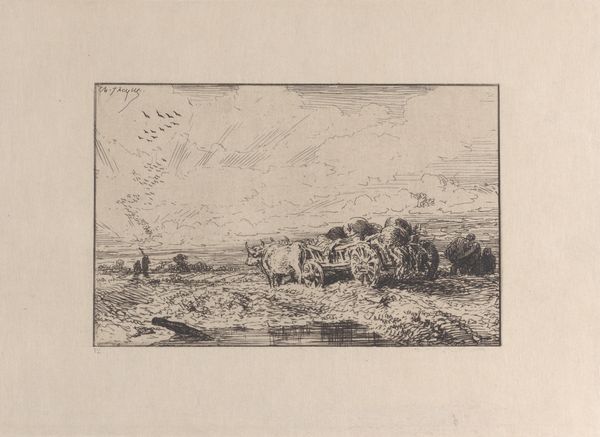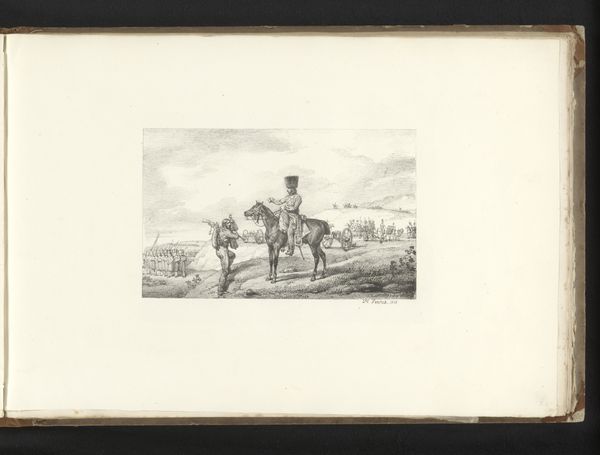
Dimensions: height 64 mm, width 92 mm
Copyright: Rijks Museum: Open Domain
Jan Stobbaerts created this print, ‘Ruiter te paard bij een wegwijzerbord,’ using etching techniques. The material quality of this print lies in the fine lines etched into the metal plate, which dictate the image's overall appearance. Note how these lines create the textures of the landscape and the figures of the rider, horse and dog. The precision of the etching process gives a certain formality to what might otherwise be a rustic scene. The etching process is also significant. It’s a labor-intensive method involving coating a metal plate with wax, drawing through the wax to expose the metal, and then using acid to bite the lines. Each print pulled from the plate required skill and time, reflecting a tradition of craftsmanship. This contrasts with industrial methods and raises questions about value, labor, and the artistic process itself. Stobbaerts’ choice of this medium suggests an appreciation for traditional methods in a rapidly industrializing era. In understanding this print, we can appreciate how the materials, processes, and social context converge. It challenges us to consider the value of skilled handcraft.
Comments
No comments
Be the first to comment and join the conversation on the ultimate creative platform.
